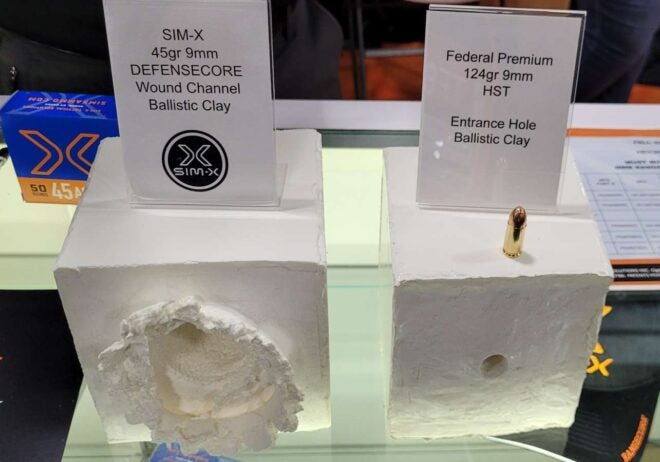Be interesting to buy some silicone sealant from local auto store. Fill the hollow point to flush with leading edge of bullet, let cure and wipe off any excess. Redo test with all the heavy clothing you want. Some of us live in cold climes where 3 layers of carhart material would be normal, in addition to t-shirts and flannels.
Is the idea that the silicone would prevent the hollowpoint from failing to expand, or that it would ensure its failure? It seems to me if a simple thing like that would somehow improve the bullet's performance, the manufacturer would do it. Polymer tips that are inserted in the meplat of some other bullet designs like Critical Duty or Ranger One are both an acknowledgement that there is concern about hollowpoint bullet failure through barriers and also a potential solution. It seems to me the polymer inserts have been found to improve the performance in the gel tests, but there are other questions about whether there was ever a problem in actual use and if the problem is real, whether the polymer inserts solve anything but gel test conundrums.
Hollowpoint alternatives have mostly been ignored by the US law-enforcement culture for a long time, something like 5 decades I suppose. Nevertheless, there were effective bullets besides hollowpoints and there still are. Besides the traditional bullet designs, I already mentioned the "fluid transfer monolithic." That seems to have been written-off as a gimmick or something by LE agencies, but I remember Bill Wilson, shortly after he had acquired Lehigh and built the Texas factory was displaying his EDC piece and showing that he carried cartridges loaded with Xtreme Defense bullets. More recently, he appeared in a video demonstrating Lehigh's Controlled Fracturing bullets and mentioned that is what he carries now. Neither the Phillips bit deals nor the fracturing bullets were an invention of Lehigh exclusively, but the fracturing bullets have become a great deal more popular for hunting through other boutique bullet makers like Cutting Edge Bullets, Hammer Bullets, Lehigh, etc.
I haven't seen how robust controlled fracturing bullets from Hammer, Lehigh, or Cutting Edge are through various barriers, the degree to which they depend on hydraulic action to fracture, or whether they consistently achieve sufficient penetration from common handgun cartridges after fracturing. Obviously, they lose some mass when fracturing, but because they don't expand, they could be designed to retain similar sectional density to an expanded hollowpoint.
Here's the Wilson Combat gel test with real gel and 4 layers of denim:


